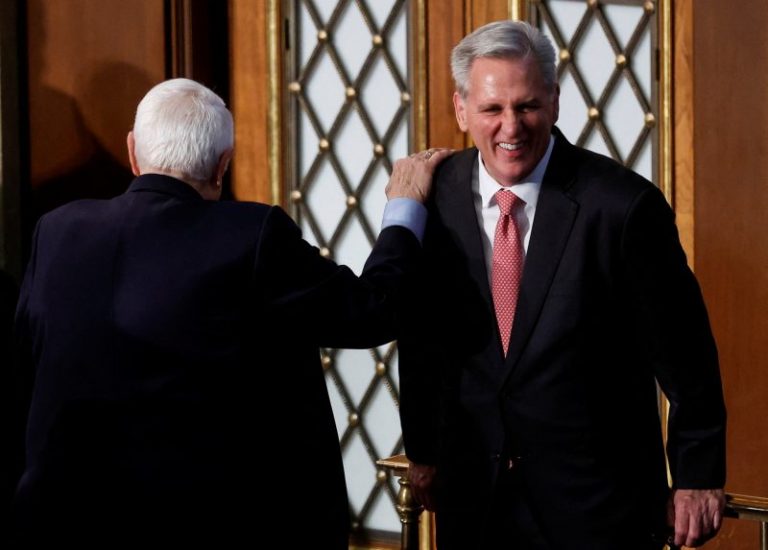This article was updated after the 11th speaker vote Thursday.
As I write, the House of Representatives has just concluded its 11th attempt to elect a speaker. Over three days, the leaders of the Democratic and Republican caucuses in the chamber have received at least 200 votes apiece on each of nine ballots — a lot, but too few to actually secure the position. Over and over, the same thing: a slow reading of the names of the members-elect and an accretion for both leading candidates of not enough votes.
But on the sixth vote, something interesting happened. The Democratic candidate for the position, Hakeem Jeffries (D-N.Y.), earned his 1,273rd lifetime vote for the position. In so doing, he passed the lifetime total of former House speaker John A. Boehner (R-Ohio), 1,269 votes, inspiring the original iteration of this article. Then, on the eleventh, another achievement: Republican caucus leader Kevin McCarthy (R-Calif.) had accumulated more votes for the position than Sam Rayburn, the Democratic speaker for a big chunk of the 20th century.
All while setting the high-water mark for most second-place finishes in speaker elections over the last 110 years.
Using data from the Congressional Research Service stretching back to 1913 and adding in The Washington Post’s running tally, we can arrange the total lifetime tallies for the 30 party nominees over that period. Or, actually, using those sources and the Congressional Record reports of the nine ballots it took to choose a speaker in 1923, when Massachusetts Republican Frederick Gillett finally dispatched Tennessee Democrat Finis Garrett. (The state-party combinations there alone should convey how long ago this was.)
At the top before this year was Rayburn, followed by Gillett and then outgoing House Speaker Nancy Pelosi (D-Calif.), the first woman to hold the position. She was passed in the 10th vote of 2023 by McCarthy (R-Calif.), thanks to his receiving votes for speaker as the party’s candidate in 2019 and 2021, as well.
Jeffries, now at 2,333 votes, sits in third place. But he is leading on another metric: He has 11 times received the most votes cast in a speaker election, moving him past Rayburn’s nine. Rayburn, of course, won the position those nine times. Since Jeffries’s 212 votes is less than a majority of votes cast, the voting continues.
There are some interesting aspects of the speaker votes that aren’t represented above. One is that both Jeffries and McCarthy received votes for speaker before they were their parties’ formal choices. That’s why Jeffries’s total is an odd number despite his having received an even number of votes nine times in a row: He also received a vote in 2021. McCarthy received votes in the speaker contest in 2015 — the one that reelected Boehner as speaker before his exasperated resignation later that year.
Those who’ve been watching the votes over the past two days are very aware that individuals other than those selected by their parties can get nominated. Byron Donalds (R-Fla.), for example, has now received 139 total votes for speaker over the 11 votes, enough to put him in 31st place since 1913. That moves him past the lowest-ranking party nominee on our chart above, North Carolina Democrat Claude Kitchin. He lost the 1921 speaker contest, earning only 122 votes.
It’s not clear how many more ballots will be required before a speaker is selected this year. If Jeffries again earns 212 votes in the 12th ballot, he’ll be only six votes shy of Rayburn. If he earns 218 votes, then, he’d tie Rayburn — and be elected speaker.
That almost certainly won’t happen. His consolation prize, like McCarthy’s, will be as one of the party candidates for speaker who received the most cumulative votes in the past 110 years. And it’s also possible, hard as it may be to believe, that one of them might earn another prize: becoming speaker.
A data error in the original article miscalculated the vote totals for several legislators. The figures have been corrected.

